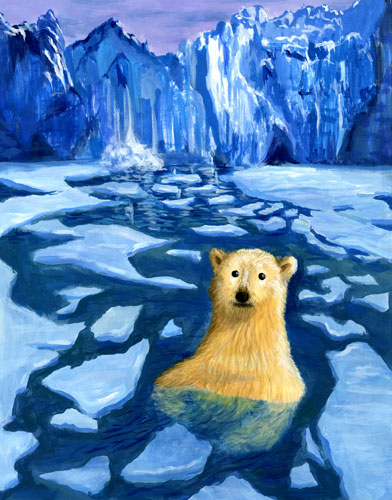 As the earth continues to warm, oceans especially, the higher temperatures create strange, sometimes horrible glitches in the system, the natural order of living is thrown out of whack — up here along Humboldt County’s shoreline, we’ve also seen the effects.
As the earth continues to warm, oceans especially, the higher temperatures create strange, sometimes horrible glitches in the system, the natural order of living is thrown out of whack — up here along Humboldt County’s shoreline, we’ve also seen the effects.
Along with the “sea star wasting syndrome,” a disease attacking ‘star fish‘ in Pacific waters from San Diego to the Canadian Northwest, now an unprecedented migration of the Hopkins’ Rose sea slug, normally found only in southern California (via SFGate): ‘However, they have recently been observed blanketing tide pools as far north as Humboldt County.’
Warm-infused migrations of the bright-pink sea slugs northward, part of a trend.
Another puzzle-piece of a puzzler.
(Illustration found here).
The population explosion of the Hopkins’ Rose is the biggest in decades, and could alter sea life in the region. Researchers from UC Santa Barbara, UC Santa Cruz, the Bodega Marine Laboratory and the California Academy of Sciences found groups of the sea slugs in tide pools in way-not-normal places.
From Voice Chronicle this morning:
Dr. Terry Gosliner, Academy Curator of Invertebrate Zoology and Geology, and the lead author of the study, said, “While we are thrilled to see this beautiful bloom of normally-rare nudibranchs, we are concerned about the long term consequences of our changing coastal environment.
“The current climate conditions are great for some of the slugs, but it can’t be ignored that warming seas indicate less food for sea birds and adverse impacts on all marine ecosystems.”
And key take-away:
Nate Mantua, a climate scientist at the NOAA Southwest Fisheries Research Center in Santa Cruz, said, “Sea surface temperatures this winter are averaging about 57 and 58 degrees from the Farallones to Santa Cruz and Monterey Bay, compared with a normal winter range of 52 to 53 degrees.
“It’s the same weather pattern that’s kept the rain from coming and…causing the drought we’re seeing on land.”
In a most-interesting piece from Spectrum last November, Ross Koningstein and David Fork, engineers at Google, outlined possible ways to combat the coming/already-here effects of climate change. However, this reference keynoted/overshadowed the whole article:
A 2008 paper by James Hansen [PDF], former director of NASA’s Goddard Institute for Space Studies and one of the world’s foremost experts on climate change, showed the true gravity of the situation.
In it, Hansen set out to determine what level of atmospheric CO2 society should aim for “if humanity wishes to preserve a planet similar to that on which civilization developed and to which life on Earth is adapted.”
His climate models showed that exceeding 350 parts per million CO2 in the atmosphere would likely have catastrophic effects.
We’ve already blown past that limit.
Right now, environmental monitoring shows concentrations around 400 ppm.
That’s particularly problematic because CO2 remains in the atmosphere for more than a century; even if we shut down every fossil-fueled power plant today, existing CO2 will continue to warm the planet.
Hence, after much detail about would ‘could‘ be done, the two engineers conceded in part: ‘While humanity is currently on a trajectory to severe climate change, this disaster can be averted if researchers aim for goals that seem nearly impossible.’
And that’s on the upside — sea slugs multiplying amongst melting sea stars, now that’s a glitch in the matrix.